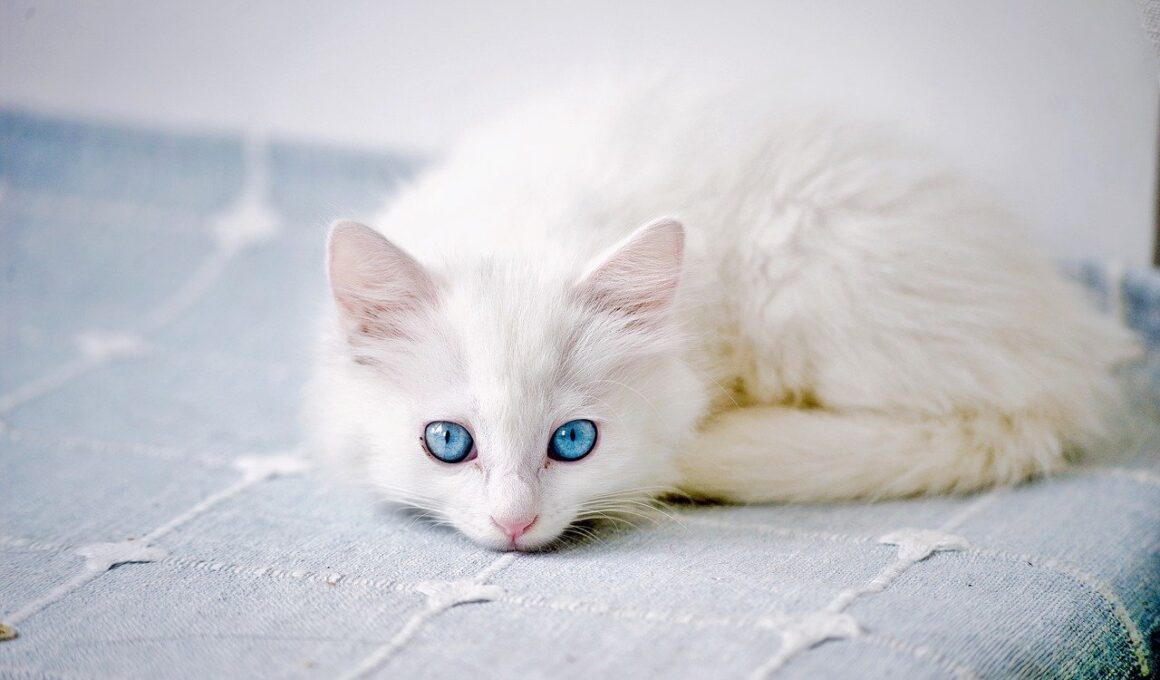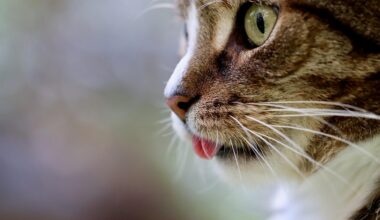The Importance of Play in Reducing Aggressive Behavior in Cats
Understanding how to manage aggression in cats is essential for their well-being and the safety of their owners. Aggression can stem from various sources, including fear, territorial disputes, or play-fighting. By engaging in regular play sessions, owners can significantly reduce aggressive behaviors that stem from pent-up energy or frustration. It is crucial to select appropriate toys that can facilitate safe play, avoiding anything that could lead to injury. For example, interactive toys that mimic prey can stimulate your cat’s hunting instincts while also promoting healthy exercise. Make sure to incorporate different types of toys, such as feather teasers, scratching posts, and laser pointers to keep your cat engaged. Furthermore, observe your cat’s reaction during playtime. Signs of enjoyment include purring, kneading, and gentle swats. Be mindful of their body language, identifying when they feel overstimulated or aggressive. If you notice such behaviors, take a break and allow your cat to cool down. Over time, with consistent play, you may notice a positive change in your cat’s behavior, promoting a calmer, more relaxed environment for everyone.
In addition to play, understanding aggressive triggers in cats is vital for managing and reducing aggression. Cats may become aggressive due to external factors, such as other pets, noises, or unfamiliar humans. Sometimes stress or anxiety can trigger an aggressive response, making it essential to recognize these signs early. To identify triggers, observe your cat in various environments and situations. When your cat exhibits signs of stress, such as hiding, hissing, or changes in posture, it’s time to adjust the surroundings. Creating a safe space, equipped with hiding spots or high perches, provides your cat a refuge away from perceived threats. Besides environmental management, introducing gradual desensitization techniques can help your cat adapt better to stressful stimuli. Positive reinforcement can also be employed during this process; rewarding calm behavior with treats encourages a more relaxed demeanor. Additionally, consider consulting with a veterinarian or animal behaviorist if needed, as they can provide tailored advice or recommend behavioral therapies. Regular play remains the cornerstone of emotional well-being, but a comprehensive approach addressing triggers is essential for lasting behavioral improvement.
Types of Play to Reduce Aggression
When considering play types that effectively reduce aggression, it’s vital to think about variety and stimulation. Cats are natural hunters, and engaging their instincts through interactive play mimics the thrill of the chase. Toys that move erratically or require the cat to stalk, catch, or pounce will be most effective. Wand toys or feather teasers can be particularly excellent choices as they allow for safe distance between the owner and the cat, reducing the risk of direct physical confrontation. Additionally, puzzle toys can stimulate your cat mentally, helping channel their energy productively without aggression. Another beneficial play activity includes scheduled playtime with other friendly pets, promoting socialization between animals. However, ensure supervision during these sessions as rough play could escalate into aggression. Creating a routine helps structure your cat’s day, allowing them to anticipate when they will engage in these stimulating activities, which can relieve stress. Gradually increasing the complexity and duration of play can also help cats adjust to varied stimuli while reducing behavioral issues. Providing a rich play environment is crucial for a happier, calmer feline.
Beyond just physical play, mental stimulation plays a critical role in managing aggression in cats. Engaging your cat’s brain can prevent boredom, a primary cause of aggressive behavior. Incorporating puzzle feeders or treat-dispensing toys can provide meals and encourage problem-solving skills. Further, consider setting up scavenger hunts around your home, hiding treats or toys in various locations—this not only keeps your cat entertained but also engages their natural instincts creatively. Environmental enrichments, such as cat trees, scratching pads, and even perches by windows, create excitement and expand your cat’s territory within your home. Rotating toys to maintain novelty is another smart strategy, keeping your cat’s playtime fresh and exciting. Interactive games, like teaching tricks or using that clicker method, can also prove rewarding for both cats and owners while boosting the bond shared. You can even incorporate training sessions into playtime, enhancing obedience while also making them fun. Finding the right balance of physical and mental stimulation is pivotal to reducing aggressive tendencies, promoting a profoundly enriching life for your beloved feline.
Identifying Play That Works for Your Cat
Every cat has unique preferences, necessitating an individualized approach to play. What captivates one cat may not be appealing to another, making it essential to experiment with various types of play. Begin by observing your cat’s natural tendencies; are they more of a chaser, stalker, or ambusher? Provide toys mimicking their preferred methods of hunting to enhance engagement. For instance, if your cat enjoys chasing, toys that roll unpredictably or automated laser pointers may delight them. Alternatively, if they prefer stalking, feather teasers or interactive toys that mimic prey will suit them better. It’s also important to note how your cat reacts to different playtimes. Some cats may enjoy short bursts of intense play, while others might prefer longer, gentler sessions. Pay attention to their signals, identifying when they seem particularly excited or overstimulated, and adjust the duration and intensity of your sessions accordingly. Engaging in trial-and-error play allows cat owners to discover what ignites their feline friend’s playful spirit and diminishes aggressive behaviors effectively, creating a balanced and enjoyable interaction.
Additionally, incorporating social play can be a game-changer in addressing aggression. Cats can be social animals, and engaging them in play with trusted humans or other feline friends can diffuse tension and promote companionship. Supervised interactive sessions with other pets or humans can enhance your cat’s social skills while providing a safe outlet for their energy. When introducing new social play partners, ensure gradual introductions. Start by allowing them to observe each other through a barrier, only progressing to direct interaction once both parties feel comfortable. The key is to monitor their body language, ensuring neither party displays aggressive signals, such as hissing or swatting. Playing with your cat, using their favorite toys, can strengthen your bond while teaching them that human interactions can be positive. Furthermore, social play with affectionate interactions can assure your cat that play is a source of joy. Regular social playtimes can lead to improved behavior, reducing loneliness and aggression while building trust between your cat and their companions, whether human or feline.
Conclusion: Play as a Tool for Better Behavior
In conclusion, play is a beneficial tool for reducing aggression in cats, enhancing both mental and physical stimulation. Through regular and engaging play sessions, cat owners can channel their feline friends’ energy positively, helping to mitigate aggressive tendencies. It is vital to identify what types of play resonate with your particular cat and incorporate diverse activities that stimulate both mind and body. Monitoring your cat’s behavior during these sessions is crucial; understanding when play becomes overstimulating can help prevent aggression. Incorporating mental challenges alongside physical exercises creates a well-rounded play environment that appeals to your cat’s natural instincts. Furthermore, engaging in social play not only reduces aggression but also fosters deep bonds between cats and their human companions. Ultimately, as owners commit to understanding their cat’s needs, they create an environment conducive to a calm and fulfilling life. Remember that patience and consistency are key. Over time, you will likely see significant improvements in your cat’s mood and behavior, leading to a happier relationship for both owner and pet, and a peaceful home.


